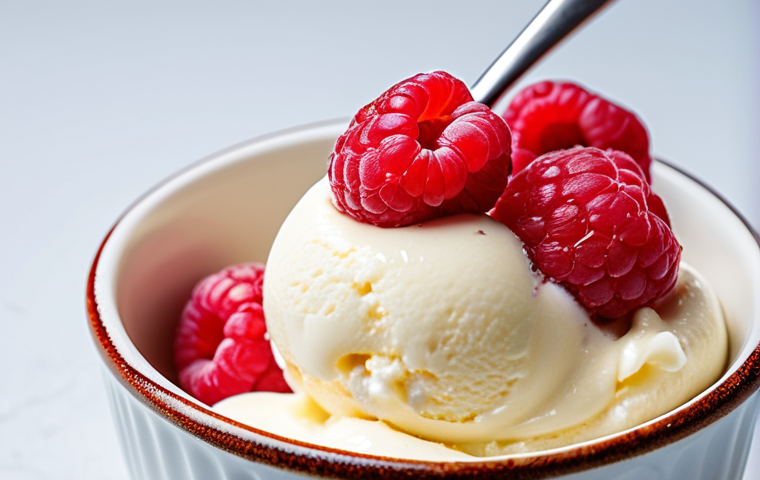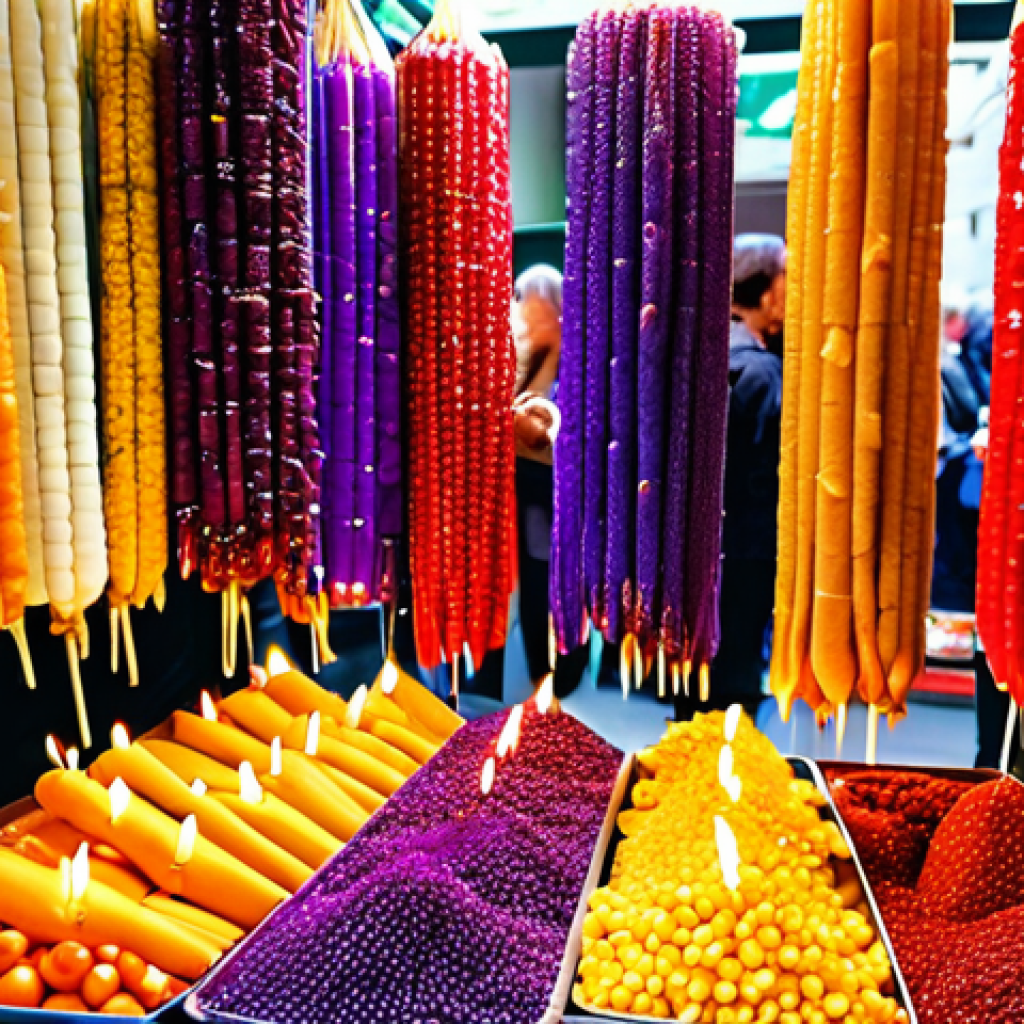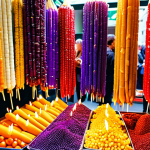Imagine strolling through the cobblestone streets of Tbilisi, the air thick with the aroma of spices and fresh-baked bread. Amidst the vibrant tapestry of Georgian culture, a sweet siren song calls – the allure of traditional Georgian desserts.
These aren’t your run-of-the-mill sweets; they’re edible stories, each bite a journey through centuries of culinary tradition. Think walnuts, honey, grape must, and a whole lot of love.
Having had the pleasure of experiencing Georgian hospitality firsthand, let me tell you, their desserts are as heartwarming as their welcomes. I’ve seen grandmothers meticulously crafting Churchkhela, the candle-shaped delicacy, and watched chefs elevate simple ingredients into masterpieces.
From the gooey sweetness of Gozinaki to the rich layers of Pelamushi, Georgian desserts are an adventure for the taste buds. Now, with culinary trends leaning towards authenticity and unique flavor profiles, these Georgian delights are poised to capture the global stage.
Experts predict we’ll see more restaurants and bakeries incorporating these traditional recipes with modern twists. So, are you ready to dive into this sweet world with me?
Let’s uncover the secrets and flavors of Georgian desserts, shall we?
Alright, buckle up for a sweet ride through the heart of Georgian desserts!
The Walnut Whisperer: Unmasking Gozinaki

Gozinaki, oh Gozinaki! It’s not just a dessert; it’s a crunchy, nutty testament to Georgian resourcefulness. Imagine New Year’s Eve in a cozy Georgian home, the air buzzing with anticipation, and a platter of Gozinaki taking center stage.
These caramelized walnut squares are not just a treat; they’re a symbol of hope and prosperity for the year ahead.
The Humble Beginnings of a Crunchy Delight
I remember watching my friend’s grandmother in Tbilisi meticulously preparing Gozinaki. She’d carefully select the walnuts, ensuring each one was perfect.
Then, the magic happened – the slow, deliberate caramelization of honey, the precise timing, and the final, satisfying crack as the mixture cooled. It was like watching an artist at work, transforming simple ingredients into edible gold.
You know, the kind of thing that makes you appreciate the craftsmanship behind every bite?
Honey, I Shrunk the Walnuts (Not Really, But the Flavor!)
What sets Gozinaki apart is the interplay of textures and flavors. The crunch of the walnuts against the sticky sweetness of the honey is a symphony in your mouth.
Some versions incorporate other nuts like hazelnuts or almonds, adding layers of complexity. I’ve even seen variations with a hint of spice, like cinnamon or cloves, giving it a warm, festive kick.
It’s the perfect balance of rustic charm and sophisticated flavor.
Beyond the New Year’s Table: Gozinaki All Year Round?
While traditionally enjoyed during New Year’s, Gozinaki is now finding its way into everyday snacking. I’ve spotted it in local markets and cafes, often paired with a strong cup of Georgian coffee.
It’s a great energy booster, perfect for those long days exploring the country’s historic sites. And honestly, who needs an excuse to indulge in a little bit of sweet, nutty goodness?
Grape Expectations: Diving into the World of Pelamushi
Pelamushi, where do I even begin? It’s like the Georgian version of pudding, but with a twist – it’s made from grape must! Imagine the concentrated sweetness of ripe grapes, simmered down to a velvety smooth consistency.
It’s rich, decadent, and surprisingly refreshing.
From Vineyard to Spoon: The Journey of Grape Must
I’ve witnessed firsthand the process of making Pelamushi during the grape harvest season in Kakheti, Georgia’s wine region. The air is filled with the sweet scent of grapes, and the locals are buzzing with activity.
The grape must, the freshly pressed juice, is carefully cooked until it thickens into a luscious, pudding-like texture. It’s a labor of love, a celebration of the region’s bounty.
Seriously, you can taste the sunshine in every spoonful.
Cornstarch, Nuts, and a Whole Lotta Love
To achieve that perfect velvety texture, cornstarch is often added as a thickening agent. And to elevate the flavor profile, walnuts or other nuts are sprinkled on top.
Sometimes, they even add a drizzle of honey for extra sweetness. It’s these little touches that make each version of Pelamushi unique and memorable.
A Taste of Tradition: Pelamushi in Modern Cuisine
While Pelamushi remains a traditional dessert, some chefs are experimenting with modern interpretations. I’ve seen it served as a component in plated desserts, paired with fresh fruit or even savory elements like cheese.
It’s a testament to the versatility of this humble ingredient, proving that tradition and innovation can coexist beautifully.
The Candle That You Can Eat: Discovering Churchkhela
Churchkhela! Okay, this one’s a showstopper. Imagine strings of walnuts dipped in thickened grape juice and dried into a candle-shaped confection.
It’s like nature’s candy bar, a visual masterpiece, and a flavor explosion all in one. I’ve seen tourists stop dead in their tracks, mesmerized by the sight of these colorful treats hanging from market stalls.
Stringing Along: The Art of Making Churchkhela
I tried my hand at making Churchkhela once, and let me tell you, it’s not as easy as it looks. First, you need to string the walnuts onto a long thread, carefully spacing them out.
Then, you repeatedly dip the string into the thickened grape juice, allowing each layer to dry before the next dip. It’s a time-consuming process that requires patience and skill.
But the end result is well worth the effort.
Colors of the Rainbow: Variations and Flavors
The color of Churchkhela depends on the type of grape juice used. You’ll find varieties ranging from deep purple to golden brown, each with its own unique flavor profile.
Some versions incorporate other ingredients like hazelnuts, almonds, or even dried fruits, adding layers of complexity. And some adventurous souls even add spices like cinnamon or cloves for a warm, festive kick.
It’s a culinary adventure in every bite.
A Traveler’s Treat: Churchkhela on the Go
Churchkhela is the perfect travel snack. It’s portable, energy-rich, and doesn’t require refrigeration. I always make sure to grab a few before embarking on a hike in the Caucasus Mountains.
It’s the perfect way to fuel up and enjoy the stunning scenery. Plus, it’s a great conversation starter. Just try walking around with a Churchkhela in your hand, and watch the smiles appear!
Fruity Delight: Exploring Tklapi
Tklapi is a unique Georgian treat that might surprise you at first. Imagine fruit puree, spread thinly and sun-dried into a leathery sheet. It’s like a fruit leather, but with a Georgian twist.
It’s a great alternative for people who are looking for a healthy snack. I remember first trying it and being taken aback by its tangy, slightly sour flavor.
But as I continued to chew, the sweetness of the fruit emerged, creating a surprisingly satisfying experience.
Sun-Kissed Goodness: The Making of Tklapi
The process of making Tklapi is simple yet ingenious. Fresh fruit, typically plums, apricots, or sour cherries, is pureed and spread thinly on large cloths.
These cloths are then placed under the sun to dry, allowing the fruit to dehydrate slowly and naturally. The result is a pliable, chewy sheet of concentrated fruit flavor.
A Palette of Flavors: From Sweet to Sour
Tklapi comes in a variety of flavors, depending on the type of fruit used. Plum Tklapi tends to be tart and slightly sour, while apricot Tklapi is sweeter and more fragrant.
Sour cherry Tklapi offers a delightful balance of sweet and tangy. I personally enjoy the plum version, especially when paired with a strong cup of Georgian tea.
A Culinary Canvas: Tklapi in the Kitchen
While Tklapi is delicious on its own, it can also be used in a variety of culinary applications. I’ve seen chefs use it as a wrapping for meat or cheese, adding a burst of fruity flavor to savory dishes.
It can also be chopped up and added to stews or sauces, providing a subtle sweetness and depth of flavor. It’s a versatile ingredient that can elevate any dish.
The Cream of the Crop: Matsoni Ice Cream
Let’s talk about Matsoni ice cream! If you’re a fan of frozen treats and tangy flavors, this one’s for you. Matsoni is a traditional Georgian yogurt, and when it’s transformed into ice cream, magic happens.
The creamy, slightly sour taste of Matsoni creates a uniquely refreshing and addictive dessert.
Yogurt Goes Glam: The Transformation of Matsoni
I remember the first time I tried Matsoni ice cream. I was skeptical at first – yogurt in ice cream? But one spoonful was all it took to convert me.
The tanginess of the Matsoni cut through the sweetness of the ice cream, creating a perfectly balanced flavor profile. It’s like a grown-up version of your childhood favorite, with a sophisticated twist.
Sweet and Sour Symphony: Flavor Combinations
Matsoni ice cream is often paired with fresh fruit, honey, or nuts to enhance its flavor. I’ve seen versions with berries, peaches, walnuts, and even a drizzle of local honey.
The combinations are endless, and each one offers a unique taste experience. Personally, I’m a fan of the classic combination of Matsoni ice cream with a handful of fresh raspberries.
A Cool Finale: Matsoni Ice Cream in Restaurants
Matsoni ice cream is becoming increasingly popular in Georgian restaurants and cafes. It’s often served as a refreshing dessert after a hearty meal, or as a standalone treat on a hot summer day.
I’ve even seen some restaurants experimenting with savory Matsoni ice cream, pairing it with grilled vegetables or smoked meats. It’s a testament to the versatility of this humble ingredient.
Sweet Cheese Delight: Nadughi in a Dessert Role
Ever thought of cheese as dessert? In Georgia, they’ve mastered the art of turning fresh cheese into a sweet treat. Nadughi, a creamy, ricotta-like cheese, takes center stage in this unique dessert.
It’s typically served with honey, nuts, or dried fruit, creating a delightful combination of sweet and savory flavors.
From Farm to Spoon: The Journey of Nadughi
I had the opportunity to visit a local farm in the mountains of Georgia and witness the making of Nadughi firsthand. The fresh milk is heated and curdled, then strained to create a soft, creamy cheese.
The farmers take pride in their craft, using traditional methods to ensure the highest quality Nadughi. You can taste the freshness and care in every spoonful.
A Sweet Canvas: Flavor Pairings and Variations
Nadughi is a blank canvas for flavor experimentation. I’ve seen it served with a drizzle of honey and a sprinkle of walnuts, creating a simple yet elegant dessert.
Others add dried fruit like figs or apricots for a burst of sweetness and chewiness. Some even incorporate spices like cinnamon or cardamom for a warm, aromatic touch.
It’s a dessert that can be tailored to your individual preferences.
Unexpected Elegance: Nadughi on the Dessert Menu
Nadughi is finding its way onto the dessert menus of some of the more innovative restaurants in Georgia. Chefs are using it in creative ways, incorporating it into tarts, cakes, and even savory dishes.
It’s a testament to the versatility of this humble ingredient, proving that cheese can be just as delicious in a dessert as it is in a savory dish. Here’s a little cheat sheet to keep track of these Georgian goodies:
| Dessert Name | Main Ingredients | Flavor Profile | Typical Occasion |
|---|---|---|---|
| Gozinaki | Walnuts, Honey | Crunchy, Sweet, Nutty | New Year’s Eve |
| Pelamushi | Grape Must, Cornstarch | Sweet, Rich, Velvety | Grape Harvest Season |
| Churchkhela | Walnuts, Grape Juice | Chewy, Sweet, Fruity | Anytime Snack |
| Tklapi | Fruit Puree | Tangy, Sweet, Chewy | Snacking, Culinary Ingredient |
| Matsoni Ice Cream | Matsoni Yogurt | Tangy, Sweet, Creamy | Dessert, Refreshment |
| Nadughi | Fresh Cheese | Creamy, Sweet, Savory | Dessert, Culinary Ingredient |
So there you have it – a whirlwind tour of the enchanting world of Georgian desserts. From the nutty crunch of Gozinaki to the fruity tang of Tklapi, each treat offers a unique glimpse into the country’s rich culinary heritage.
These sweets are definitely worth exploring, so next time you find yourself in Georgia, be sure to indulge in a little bit of sweetness!
Wrapping Up
So, there you have it—a dive into the delectable world of Georgian desserts! Each sweet offers a unique taste of Georgia’s culinary heritage, from the nutty Gozinaki to the tangy Tklapi. If you ever find yourself wandering the streets of Tbilisi or exploring the vineyards of Kakheti, be sure to treat yourself to these delightful eats. Your taste buds will thank you!
Handy Tips & Tricks
1. Best time to visit Georgia for desserts: Autumn, during the grape harvest, is ideal for experiencing fresh Pelamushi and Churchkhela.
2. Where to buy: Local markets and bakeries offer the most authentic and freshly made Georgian desserts. Avoid tourist traps for better quality.
3. Transportation: Use local transport like “Marshrutkas” (minibuses) for a real Georgian experience while hunting for these treats.
4. Currency: The local currency is Georgian Lari (GEL). Credit cards are widely accepted in cities, but cash is useful in rural areas.
5. Tipping: Tipping is not mandatory but appreciated in restaurants and cafes. A 10% tip is considered generous for good service.
Key Takeaways
• Gozinaki: Crunchy, nutty treat perfect for New Year celebrations.
• Pelamushi: A grape-must-based pudding, ideal during grape harvest season.
• Churchkhela: A portable walnut and grape juice candy, great for on-the-go snacking.
• Tklapi: Sun-dried fruit leather, a tangy and healthy snack.
• Matsoni Ice Cream: A tangy yogurt-based ice cream, refreshing on hot days.
• Nadughi: A creamy cheese dessert, often served with honey and nuts.
Frequently Asked Questions (FAQ) 📖
Q: What makes Georgian desserts stand out from other sweet treats around the world?
A: Honestly, it’s the combination of unique ingredients and ancient traditions that really sets them apart. I mean, where else are you going to find things like grape must or walnuts used in such innovative ways?
It’s not just sugar overload; it’s an experience. Plus, there’s always a story behind each dessert, passed down through generations, which adds a layer of authenticity you just can’t replicate.
Having tasted desserts from all over, I can tell you Georgian desserts have a special warmth that sticks with you.
Q: Are Georgian desserts difficult to make at home, or can the average baker give them a try?
A: Some are definitely more involved than others. Making Churchkhela, for example, requires a bit of patience and the right ingredients. But then you’ve got things like Gozinaki, which are essentially caramelized walnuts with honey – relatively simple to whip up!
I’d say if you’re comfortable with basic baking, you can definitely tackle a few Georgian desserts. Just start with something straightforward, and don’t be afraid to experiment with flavors.
You might just surprise yourself!
Q: Where can I find authentic Georgian desserts outside of Georgia?
A: re there any specific brands or restaurants I should look for? A3: That’s a great question! It can be a bit tricky, but more and more Georgian restaurants are popping up, especially in larger cities.
Keep an eye out for restaurants specializing in Eastern European or Caucasian cuisine; they often feature Georgian desserts on their menus. As for brands, I haven’t personally come across any major ones readily available in supermarkets, but you could try looking for online retailers that import specialty foods.
Honestly, though, the best way to find authentic Georgian desserts is to ask around in local ethnic communities. You might even get lucky and find someone willing to share a homemade treat!
📚 References
Wikipedia Encyclopedia
구글 검색 결과
구글 검색 결과
구글 검색 결과
구글 검색 결과
구글 검색 결과

